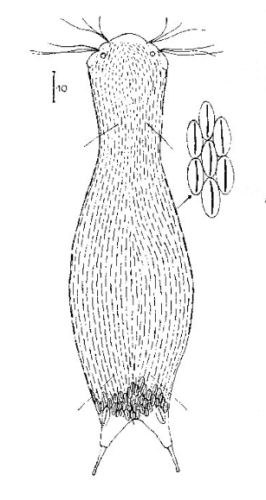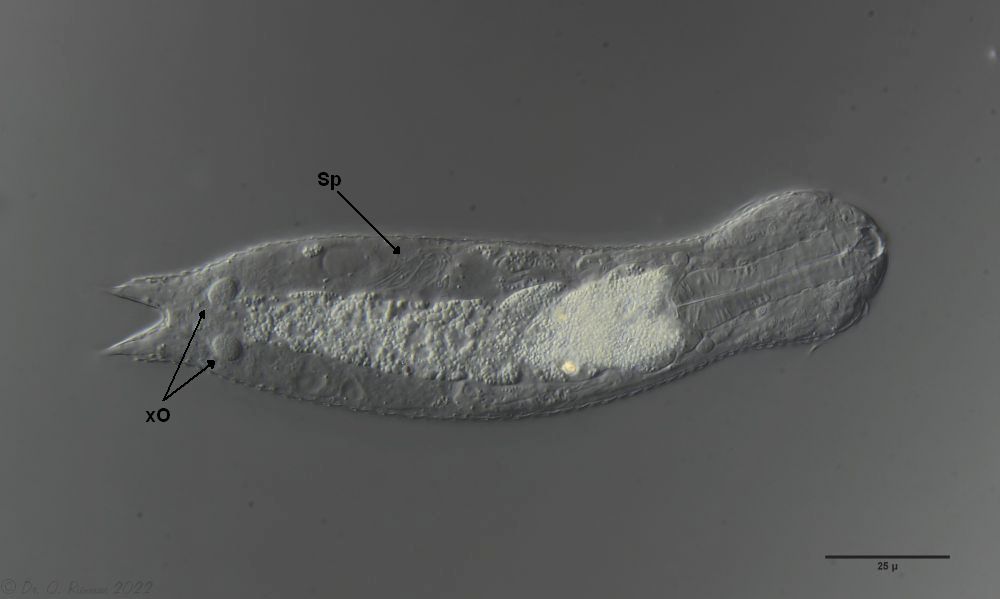Heterolepidoderma majus

130 µm - 200 µm
Width:
29 µm - 30 µm
Width of the head ( threelobed ):
21 µm - 23 µm
Width of the neck:
18 µm - 19 µm
Length of the furca:
14 µm - 20 µm
Adhessive tubes:
50% of furca
Pharyx ( cylindrical, terminal swollen ):
35 µm - 51 µm
Diameter of the mouth ( around ):
7 µm
Dorsal scales:
25 rows of 40-80 elongated narrow keel scales each (3 x4 µm, maximum 7 µm)
Ventral scales:
6-11 rows with 18-30 small keel scales each (1.5 - 3 µm)
Oecology:
very common, on mud
Particularities:
Stomach ring, sometimes stands still
Heterolepidoderma majus is a very widespread, slender and elegant belly-hardy.

H. majus: dorsal scaling ( Ole Riemann)
One of the animals observed was in its post-parthenogenetic (hermaphroditic) phase and showed a sperm bundle in addition to the conspicuous bipartite X-organ at the posterior end:

H. majus: x-organ (xO) and sperm bundle (Sp)( Ole Riemann)
The scaling at the base of the toes is typical for the species. The sensory hairs arise from special scales:

H. majus: Scaling of the base of the toes ( Ole Riemann)
The ventral intermediate field is occupied by small, elongate keel scales and bears two terminal keel plates:

H. majus: Scaling of the ventral interfield
Another feature that makes the species distinctive is the demarcated “stomach ring” on the foregut:

H. majus: Intestine with “stomach ring”